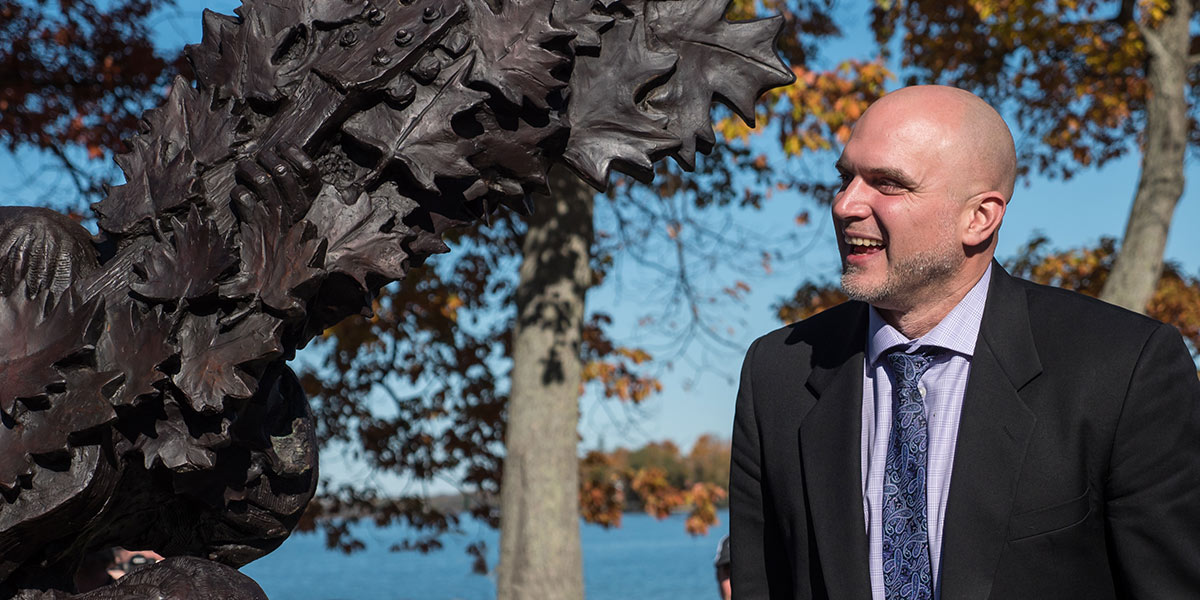THE ARTIST - TIMOTHY SCHMALZ
Timothy Schmalz is a large-scale sculptor based in St. Jacobs, Ontario. He was selected in 2012 to design and create the four-metre-high Golden Leaves statue that was unveiled in 2015.
Schmalz is a figurative artist, who has pieces installed around the globe.
He is best known for his religious pieces, which have been installed in cities and churches throughout the globe, including in Rome and at the Vatican.
His most famous piece is Homeless Jesus, a bronze sculpture depicting Jesus as a homeless person sleeping on a park bench. The original sculpture was unveiled at Regis College in Toronto in 2013, and since then over 100 casts have been installed outside churches in Chicago, Indianapolis, Dublin and outside the Papal Office of Charities in Rome.
While the bulk of his work is focused on his Christian faith, he has also created large-sized bronze monuments including the Canadian Veterans’ Memorial in Waterloo, the National Mining Monument in Sudbury, and the Fallen Fire Fighters Memorial in Kitchener.
Golden Leaves
When he took to working on Golden Leaves, Schmalz says he let Lightfoot’s lyrics guide him.
“Every single time I worked on the piece I would play Gord’s Gold,” he said. “It was a total Gordon Lightfoot environment. There’s some spirit that each of his songs has that is difficult to articulate … and creating that environment was very influential in the final, finished bronzed sculpture.
“The piece became very lyrical,” Schmalz said, “in terms of the design, the flow … every line, the curve of the leaves.”
Schmalz said he was influenced by Lightfoot’s songs at an early age, which helped him turn Lightfoot’s powerful lyrics into something visual.
“Gordon Lightfoot defined my own experience of living in Canada. He gave me a feeling of identity of living in Canada. He truly touched on the life of being a Canadian. I visually froze the songs to protect them and to pass them on to future generations.”
In terms of what he wants visitors to the statue to get out of the monument, he says simply, “I want people to start listening to Gordon Lightfoot. I want them to discover. In the future, (the statue) will be a perpetual curiosity, an invitation to look at his music and rediscover it.”
